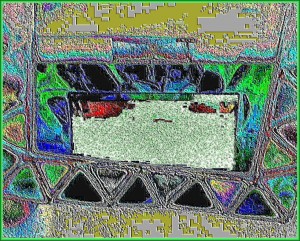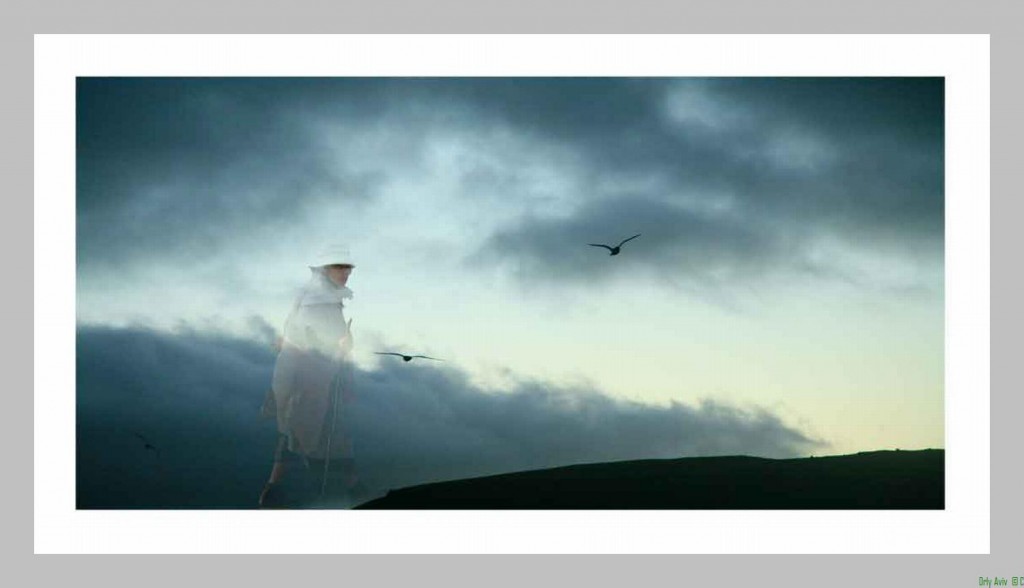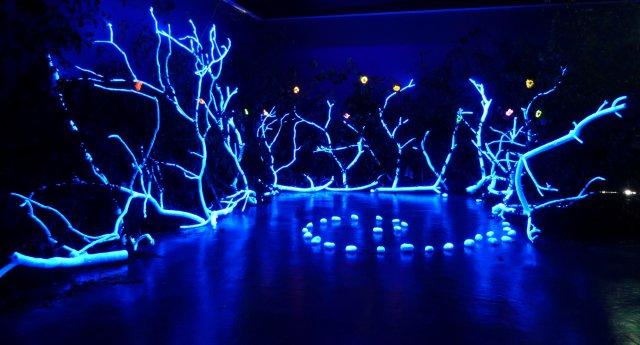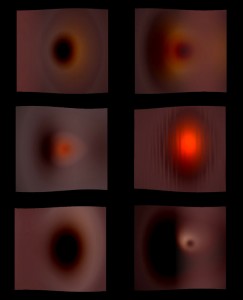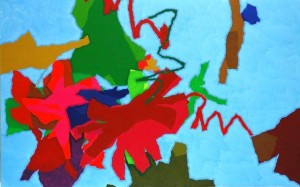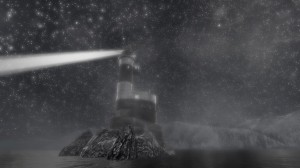David Hockney, perhaps Britain’s most famous living artist, has never been one to shy away from the use of new technology. Whilst a student at the Royal College of Art he embraced acrylic paints when they were still quite new in the 1960s and has used the photocopying machine and a Polaroid camera to create collages, exploiting the unique characteristics of each of these mediums. Recently Hockney has turned to the iPad and this month’s image, from a group called The Arrival of Spring in East Yorkshire, was made on the iPad, printed out on a large scale and is currently on show at the Royal Academy, London. Read the full article here: http://www.bcs.org/content/conWebDoc/43630 See also a related post here:http://www.spiritofplacenorfolk.org/pages/aspects.html
Image of the Month
A monthly column I’m writing for The Chartered Institute for IT (formerly known as the British Computer Society), in conjunction with the Computer Arts Society.
A Machine that Makes Art
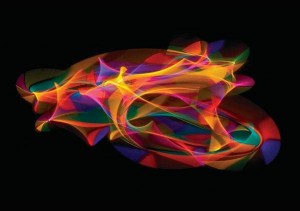
The inspiration for this month’s BCS column comes from the great conceptual artist Sol LeWitt’s statement, The idea becomes a machine that makes the art (1967). Although LeWitt’s machine was metaphorical rather than literal, nevertheless this radical concept raised questions about the notion of art process and creative behaviour and challenged the notion of what art was or could be. This month we explore the history of the use of analogue mechanical systems and machines in art through the work of Jack Tait, seen above. Read the full article here: http://www.bcs.org/content/conWebDoc/43260
Optic Allsorts
To mark a year’s worth of writing about the world of computer arts for the British Computer Society’s on-line journal and as an end of year special, for December we are celebrating with a quartet of images submitted by readers. The four images by Alan Sutcliffe, Ursula Freer, Mark Thorpe and Nigel Williams reveal a kaleidoscopic mixture of digital technique, complexity, happenstance, experimentation and dazzling colour.
Read the full article here: http://www.bcs.org/content/conWebDoc/43024
Plotted Stitching
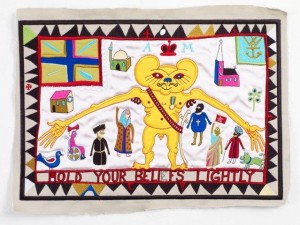
This month’s image is by Turner Prize-winning artist Grayson Perry and shows he has more strings to his bow than pot-making. Hold Your Beliefs Lightly is a small flag featuring Alan Measles, Perry’s childhood teddy bear and source of inspiration in his art (he even has his own blog!) This comes from Perry’s current exhibition at the British Museum highly recommended for the artist’s intriguing selection of rarely-seen objects from the BM’s collection, interspersed with his own art works to create an interesting dialogue between objects and makers throughout history. Read it here: http://www.bcs.org/content/conWebDoc/42643
Digital Post-Pop
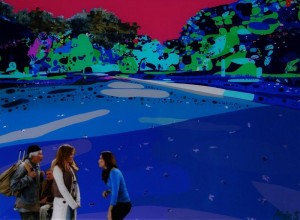
This month’s artist turns Pop art on its head and gives us a digital take on painting that forces us to confront an uncomfortable truth about modern life. British artist Marina de Stacpoole plays out a scene from popular television series Desperate Housewives against a richly-coloured backdrop of the kind more typically seen in computer games animation. Read the full article here: http://www.bcs.org/content/conWebDoc/42102
A Sense of Place
A ghostly, lone figure appears out of the mist as if something half-remembered from a dream in September’s artwork by Orly Aviv. It’s an image with strong representational, even narrative elements; although the typography of the original location is subsumed the work manages to create a real sense of place. It is a reinterpretation of the Sublime facilitated by the artist’s use of digital technologies. Read the full text here: http://www.bcs.org/content/conWebDoc/41489
A Magical Forest That Reacts To Your Presence
Currently on view at Waterman’s in London is this recreation of an imaginary forest by French art duo Scenocosme (Grégory Lasserre & Anaïs met den Ancxt) which aims to turn spectators into apprentice musicians. Read the full article here: http://www.bcs.org/content/conWebDoc/41054
Light Constructed by Numbers
This month’s image is a selection of stills from an interactive digital artwork by French artist Anne-Sarah Le Meur, who is interested in questions such as: How does light behave in a virtual space, constructed only by numbers? How do these numbers allow one to play, to disturb, to possibly twist physical laws of light, when one is not looking to simulate realistic phenomena? Read the full text here: http://www.bcs.org/content/conWebDoc/40701
Autonomous Art Making Machine
Following his recent show in Cork Street, this month’s image is by that great pioneer Harold Cohen, the only artist I know who is tackling the problem of building a program that actually makes art, rather than modelling human art-making. Summer Equinox (below) is representative of the latest development of AARON his art making computer program, and uses paint applied by Harold by hand over underpainting produced by the program. Read the full article here :http://www.bcs.org/content/conWebDoc/40294
A Metaphysical World
May’s image is a still from Ruth Gibson & Bruno Martelli’s, Vermilion Lake, an interactive artwork comprising 3-D computer graphics driven by videogame technology, inspired by the artists travels to the snow-driven mountains of the Canadian Rockies. It is a hauntingly beautiful landscape of forests and reflective water under a big sky full of dazzling stars and snowflakes. Read the full article here: http://www.bcs.org/content/conWebDoc/40012
I am always on the lookout for striking new digital and technologically-mediated images, so please send me your latest works, artists statements, events, etc. for consideration

